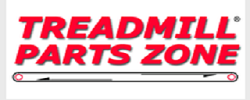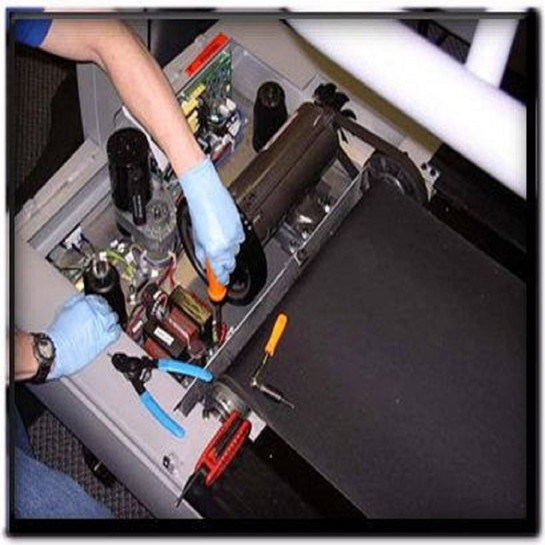Are Ribbed V Belts the same as V Belts?
The importance of understanding the distinctions between Ribbed V Belts and V Belts
In the world of power transmission, belts play a crucial role in transferring power from one component to another. Two types of belts commonly used are Ribbed V Belts and V Belts. While they may seem similar at first glance, there are significant differences between them that can impact their performance and applications. This article aims to decode the mystery and provide a comprehensive understanding of the distinctions between Ribbed V Belts and V Belts.
What are Ribbed V Belts?
Ribbed V Belts, also known as Poly-V Belts or Multi-Rib Belts, are a type of power transmission belt that features multiple longitudinal ribs on the inner side. These ribs engage with corresponding grooves on the pulleys, providing a larger contact surface area compared to traditional V Belts. This design allows Ribbed V Belts to transmit higher levels of power efficiently while maintaining excellent grip and reducing slippage.
Unlike V Belts, Ribbed V Belts are flexible and can be used in applications that require compact designs. They are commonly made from a mixture of rubber and polyester cords, which provides high strength and resistance to wear and tear. Ribbed V Belts are ideal for use in serpentine systems, where a single belt is responsible for driving multiple components such as alternators, power steering pumps, and air conditioning compressors.
What are V Belts?
V Belts, also known as Vee Belts or Wedge Belts, are a type of power transmission belt that resembles the shape of a "V" when viewed from the side. They are typically made from rubber and feature a trapezoidal cross-section. V Belts rely on friction to transfer power from the driving pulley to the driven pulley. The angled sides of the belt allow it to wedge into the pulley grooves, creating a strong grip and preventing slippage.
V Belts are known for their simplicity and reliability. They are commonly used in applications where high power transmission is required, such as industrial machinery, agricultural equipment, and automotive engines. The design of V Belts allows them to handle heavy loads and operate at high speeds without compromising performance.
Key differences between Ribbed V Belts and V Belts
While both Ribbed V Belts and V Belts serve the purpose of power transmission, there are several key differences that set them apart.
- Design: The most apparent distinction between Ribbed V Belts and V Belts is their design. Ribbed V Belts have multiple ribs on the inner side, whereas V Belts have a trapezoidal cross-section.
- Contact Surface: Ribbed V Belts provide a larger contact surface area due to their multiple ribs, resulting in increased power transmission capacity. On the other hand, V Belts have a smaller contact surface area, limiting their power transmission capabilities.
- Flexibility: Ribbed V Belts are more flexible than V Belts, which allows them to be used in compact systems and applications with tight spaces. V Belts, though less flexible, are better suited for heavy-duty applications that require high power transmission.
- Load Distribution: The multiple ribs of Ribbed V Belts distribute the load evenly across the belt, minimizing wear and extending the belt's lifespan. V Belts, with their single rib, may experience uneven load distribution, leading to premature wear in certain areas.
Advantages of Ribbed V Belts
Ribbed V Belts offer several advantages that make them suitable for specific applications:
- Higher Power Transmission: Due to their larger contact surface area, Ribbed V Belts can transmit higher levels of power compared to V Belts. This makes them an excellent choice for applications that require more power, such as serpentine systems in vehicles.
- Reduced Slippage: The multiple ribs of Ribbed V Belts provide better grip and reduce the chances of slippage, ensuring efficient power transfer even in demanding conditions.
- Compact Design: The flexibility of Ribbed V Belts allows for a compact design, making them ideal for applications with limited space or complex layouts.
- Reduced Noise: Ribbed V Belts tend to generate less noise and vibration during operation compared to V Belts, providing a quieter and smoother power transmission experience.
Advantages of V Belts
While Ribbed V Belts have their advantages, V Belts also offer unique benefits:
- High Load Capacity: V Belts are designed to handle heavy loads and are commonly used in industrial applications that require robust power transmission.
- Reliable Performance: The wedging action of V Belts in the pulley grooves ensures a secure grip, reducing the chances of slippage and ensuring reliable power transmission.
- Cost-Effective: V Belts are generally more cost-effective compared to Ribbed V Belts, making them a popular choice for applications where high power transmission is not a primary requirement.
- Wide Availability: V Belts are widely available and come in various sizes and configurations, making them easily accessible for replacement or new installations.
Applications and industries where Ribbed V Belts are commonly used
Ribbed V Belts find applications in various industries and systems, including:
- Automotive: Ribbed V Belts are commonly used in vehicles for driving components such as alternators, power steering pumps, and air conditioning compressors. Their compact design and high power transmission capacity make them ideal for serpentine systems.
- HVAC Systems: Ribbed V Belts are utilized in heating, ventilation, and air conditioning (HVAC) systems to drive fans, blowers, and pumps. Their efficient power transmission and reduced noise make them a preferred choice in this industry.
- Industrial Machinery: Ribbed V Belts are used in industrial machinery for power transmission in applications such as conveyor systems, compressors, and pumps. Their versatility and reliability make them an essential component in various manufacturing processes.
- Appliances: Ribbed V Belts are employed in appliances like washing machines, dryers, and dishwashers to drive motors and other moving parts. Their compact design and efficient power transmission contribute to the overall performance of these appliances.
Applications and industries where V Belts are commonly used
V Belts are widely used in numerous industries and applications, including:
- Agricultural Equipment: V Belts are extensively used in agricultural machinery such as tractors, combines, and harvesters to transfer power from the engine to various components. Their high load capacity and reliability make them suitable for demanding agricultural operations.
- Industrial Machinery: V Belts are commonly found in industrial machinery such as pumps, generators, and machine tools. Their ability to handle heavy loads and operate at high speeds makes them a preferred choice in many manufacturing processes.
- Automotive: V Belts are utilized in automotive engines to drive components such as water pumps, power steering pumps, and air conditioning compressors. Their robust design and reliable performance contribute to the overall efficiency of the vehicle.
- HVAC Systems: V Belts are commonly used in HVAC systems to drive fans, blowers, and compressors. Their ability to handle high loads and provide consistent power transmission makes them suitable for this industry.
Choosing the right belt for your specific needs
When it comes to choosing between Ribbed V Belts and V Belts, several factors should be considered:
- Power Transmission Requirements: Evaluate the power transmission requirements of your application. If high power transmission is essential, Ribbed V Belts may be the better choice. For applications with moderate power requirements, V Belts can provide a cost-effective solution.
- Space Constraints: Assess the available space for belt installation. If the application has limited space or requires a compact design, Ribbed V Belts may be the optimal choice due to their flexibility. V Belts are suitable for applications with ample space and do not require tight bends.
- Load Capacity: Consider the load capacity required for your application. If the application involves heavy loads or operates at high speeds, V Belts are better suited due to their ability to handle such conditions.
- Noise and Vibration: Take into account any noise or vibration concerns. Ribbed V Belts tend to generate less noise and vibration compared to V Belts, making them suitable for applications where noise reduction is a priority.
Conclusion: Understanding the distinctions and making an informed decision
In conclusion, Ribbed V Belts and V Belts may appear similar, but they have distinct characteristics that set them apart. Ribbed V Belts offer advantages such as higher power transmission, reduced slippage, and a compact design. On the other hand, V Belts excel in high load capacity, reliability, and cost-effectiveness. Understanding these distinctions is crucial in making an informed decision for your specific power transmission requirements.
Whether you need a belt for automotive, industrial, or HVAC applications, carefully assess factors such as power transmission requirements, space constraints, load capacity, and noise considerations before making a choice between Ribbed V Belts and V Belts. By doing so, you can ensure optimal performance, efficiency, and longevity for your power transmission system.
Remember, when in doubt, consult with a trusted belt supplier or manufacturer who can provide expert guidance based on your specific needs. Making the right choice will result in a more efficient and reliable power transmission system for your application.


